#UML Homework Assignment
Explore tagged Tumblr posts
Text
Decoding Complexity: Mastering UML with Expert Guidance

Welcome to the realm of UML, where abstract ideas meet concrete solutions, and the language of diagrams speaks volumes. At DatabaseHomeworkHelp.com, we understand the challenges that come with UML assignments, and our experts are here to guide you through even the toughest topics. In this blog, we'll explore a complex UML topic, provide master-level sample questions and answers, and demonstrate how our experts can provide the assistance you need. If you find yourself saying, "Help with UML homework," you've come to the right place.
Topic: "Dynamic Modeling with Sequence Diagrams in UML"
Dynamic modeling in UML, specifically through sequence diagrams, offers a powerful way to visualize the interactions and flow of messages between objects in a system. Let's delve into some master-level sample questions and answers to showcase the depth of this topic.
Sample Questions:
1. Design a sequence diagram for an online shopping system where a user adds items to the cart, proceeds to checkout, and completes the purchase. Highlight user interactions and system responses.
Answer:
uml
@startuml actor User participant Cart participant Checkout participant Payment User -> Cart: Add items to cart activate Cart Cart -> Checkout: Proceed to checkout activate Checkout Checkout -> Payment: Complete purchase activate Payment Payment --> Checkout: Confirmation deactivate Payment Checkout --> Cart: Confirmation deactivate Checkout Cart --> User: Order confirmation deactivate Cart @enduml
2. Implement a Java code snippet for a class involved in the sequence diagram above, demonstrating the handling of cart operations.
Answer:
java
public class ShoppingCart { private List<Item> items = new ArrayList<>(); public void addItem(Item item) { items.add(item); } public List<Item> getItems() { return items; } // Other relevant methods... }
3. Explain the use of asynchronous messages in a sequence diagram and provide an example scenario where they are beneficial.
Answer: Asynchronous messages in UML sequence diagrams represent interactions where the sender does not need to wait for a response. For example, in a messaging system, a user might send a message to another user without waiting for an immediate reply. This non-blocking communication allows for increased system responsiveness and efficiency.
How Our Experts Can Help:
At DatabaseHomeworkHelp.com, our expert team consists of seasoned professionals with extensive experience in UML and dynamic modeling. When you seek help with UML homework, you benefit from:
Expertise in UML: Our team is well-versed in UML concepts, ensuring accurate and comprehensive assistance.
Customized Solutions: We tailor our solutions to your specific requirements, ensuring that your UML assignments meet the highest standards.
Code Proficiency: Our experts are not only adept at creating diagrams but are also skilled in implementing code, bridging the gap between UML and practical application.
Timely Delivery: We understand the importance of deadlines, and our experts work diligently to deliver solutions promptly.
Dynamic modeling with sequence diagrams is undoubtedly a challenging aspect of UML, but with the right guidance, it becomes a manageable task. At DatabaseHomeworkHelp.com, we pride ourselves on offering top-notch assistance for UML assignments. If you find yourself struggling with dynamic modeling or any other UML concept, simply say, "Help with UML homework," and let our experts guide you to success.
8 notes
·
View notes
Text
ESOF 322: Software Engineering I Homework 2
Exercise Part A (15 pts) For each of the following (pseudo) code snippets provide the UML class diagram. 1. public class Student { (2pts) private Assignment assignment; } public class Assignment { private Student std; } 2. public class Disk { (3pts) private List< BackupAccess > entries; } public class BackupAccess { private DiskShare x; private List< Disk > disks; } public class DiskShare…
0 notes
Text
My Lifesaver: Database HomeworkHelp.com for UML Homework
As a computer science student, I often find myself overwhelmed with the amount of coursework and projects we are expected to complete. Amidst the various subjects and programming assignments, one area that consistently posed a challenge for me was Unified Modeling Language (UML). Creating detailed and accurate UML diagrams, understanding the complexities of different relationships, and ensuring that every component is correctly represented was no easy feat. That’s when I stumbled upon Database HomeworkHelp.com, and it has been a game-changer in my academic journey.
I remember the first time I felt the pressure of a looming UML assignment deadline. I had spent countless hours trying to understand the intricacies of class diagrams, sequence diagrams, and use case diagrams, but I still couldn’t get a clear grasp. The frustration was real, and I needed a solution fast. While searching online for help, I came across Database HomeworkHelp.com. Their promise to complete my UML homework with precision and on time seemed like the answer to my prayers.
From the moment I landed on their website, I was impressed by the user-friendly interface and the wealth of information available. It was clear that they specialized in various aspects of database and UML homework help. The process to submit my assignment was straightforward: I filled out a form detailing my requirements, attached the necessary documents, and specified the deadline. Within minutes, I received a confirmation email, and shortly after, a dedicated expert was assigned to my task.
What struck me most was the professionalism and expertise of the team at Database HomeworkHelp.com. My assigned tutor not only had extensive knowledge in UML but also had practical experience in the field. This combination of theoretical and practical understanding made a significant difference. They didn’t just aim to complete my UML homework; they aimed to ensure I understood the concepts as well.
The first assignment I submitted was a complex one. I needed to create a comprehensive class diagram for a hypothetical e-commerce system. The requirements were detailed, and I was worried if anyone could actually meet them within the tight deadline. However, the expert at Database HomeworkHelp.com exceeded my expectations. Not only did they deliver a flawless class diagram, but they also provided a detailed explanation of each component. This step-by-step breakdown helped me understand the logic behind the diagram, which was invaluable for my learning process.
One aspect that sets Database HomeworkHelp.com apart is their commitment to ensuring that students like me genuinely grasp the concepts. After delivering the assignment, my tutor scheduled a follow-up session to discuss the diagram. This interactive session was a revelation. I could ask questions, clarify doubts, and get insights into best practices for creating UML diagrams. This personalized attention made a world of difference. It wasn’t just about getting the homework done; it was about truly learning and growing.
Over the next few months, I continued to seek their help for various UML assignments. Each time, the quality of work was impeccable. Whether it was use case diagrams, sequence diagrams, or activity diagrams, the experts at Database HomeworkHelp.com consistently delivered high-quality work. Their meticulous attention to detail ensured that every element was accurate and aligned with industry standards.
Another major advantage of using Database HomeworkHelp.com was the punctuality. Meeting deadlines is crucial in the academic world, and they never failed to deliver on time. This reliability took a huge weight off my shoulders. Knowing that I could count on them to deliver my assignments before the deadline gave me peace of mind and allowed me to focus on other pressing tasks.
Furthermore, the customer support team was always available and responsive. Whether I had a query about the assignment, needed a minor revision, or just wanted to check on the progress, the support team was just a message away. Their prompt responses and willingness to assist at any time made the entire process smooth and stress-free.
Beyond the exceptional service for UML homework, Database HomeworkHelp.com also offers a treasure trove of resources. Their blog posts, tutorials, and guides on various database and UML topics are incredibly informative. I often found myself browsing through their content to supplement my learning. These resources are well-written, easy to understand, and packed with practical tips and examples.
Reflecting on my experience, I can confidently say that Database HomeworkHelp.com played a pivotal role in my academic success. Before discovering their service, UML assignments were a source of anxiety and frustration. But with their help, I was able to tackle these assignments with confidence and improve my overall understanding of the subject. My grades improved significantly, and I developed a newfound appreciation for UML and its applications in real-world scenarios.
In conclusion, if you’re a student struggling with UML assignments, I highly recommend Database HomeworkHelp.com. Their promise to complete my UML homework with precision and punctuality was not just marketing hype – it was a commitment they honored every single time. The combination of expert knowledge, personalized attention, and exceptional customer service makes them a standout choice. Thanks to Database HomeworkHelp.com, I can now approach UML assignments with confidence and a clear understanding of the concepts. They have truly been my lifesaver in the world of computer science education.

0 notes
Text

Writing UML homework is not an easy task. You need to have a good grasp of the subject to complete the work on time. If you are stuck in your work, seek assistance from the online team. Our expertise and in-depth knowledge of the course provide appropriate solutions for writing your assignment. To learn more, check with the team online.
0 notes
Text
Homework #7 – Fun with Strings and Vectors
In this assignment you are asked to implement a StringUtility class containing a variety of member functions that work with vectors of strings. The following UML class diagram shows the attributes and behaviors of class StringUtility. Important: In this assignment you may not use arrays or the C string handling functions (e.g. strlen, stcpy, etc.); you may only use vector and…
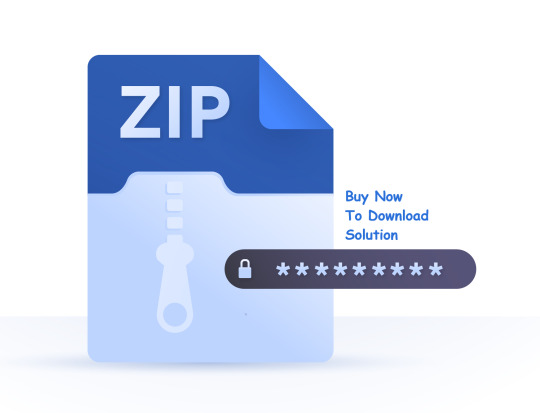
View On WordPress
0 notes
Text
UML Homework Assignment
UML ASSIGNMENT ASSIST PROVIDES YOU FOLLOWING SERVICES:
Use Case Diagram
Object Diagram
Class Diagram
Sequence Diagram
Interactive Diagram
Collaboration Diagram
Activity Diagram
Component Diagram
Deployment Diagram
System Design
UML State Charts Diagram
ER Diagram
Interaction Modeling
Analysis and Design
UML Diagram
Abstract Class
Aggregation
#UML Homework Assignment#Online UML Assignment Help#UML Homework Help#UML Assignment Helpers#Best UML Assignment Help#UML Assignment Help#Best UML#The Best UML Assignment Help
0 notes
Photo










I am James S. I am a UML Diagram Assignment Help Expert. I hold a Ph.D. in Programming, from La Trobe University, Australia. I have been helping students with their homework for the past 9 years. I solve assignments related to UML Diagram. Visit eduassignmenthelp.com or email [email protected]. You can also call on +1 678 648 4277 for any assistance with UML Diagram Assignments.
#Edu Assignment Help#Edu Homework Help#education#UML Diagram Assignment Help#UML Diagram Homework Help#UML Assignment Help#UML Homework Help
0 notes
Text
Teaching to RTFM
I think RTFM has its place. I know I’m not in the minority with this view, but it’s not exactly polite to talk about it. We have all started out on the other side of RTFM at some point, clueless and helpless, not knowing where to begin.
To be quite honest, I wasn’t told to RTFM that much, because I learned to program from books when I was 12, and I wished I could ask somebody for guidance. My father still knew BASIC from the late 70s and early 80s, and my teachers knew enough PASCAL to pass their own exams and then teach children how to use Microsoft Excel. There was nobody to turn to.
When I started learning Java from a book, I was very confused, and I learned many bad habits, idiosyncrasies of the book’s author that I stuck with because I didn’t understand what they meant. Then I bought a bigger, heavier book about Java, and I slowly learned to program. I learned programming in general and Java in particular at the same time. One textbook explained what classes in Java do, but not why you would use them, and the other textbook vacillated between treating OOP as a scary newfangled concept nobody understands but everybody has to use because of Java, and something you have to be familiar with already because the book assumed you already knew C, C++, BASIC and smalltalk.
I read the manual and I didn’t understand. What finally got me to understand OOP was ironically learning and reading code in Python. Unlike in Java and smalltalk, OOP in Python is optional. Although everything in Python is an object, the common Pythonic programming style is procedural, with OOP constructs used sparingly when they make sense. This finally let me understand what OOP is good for. No amount of contrived examples like “class PickUpTruck extends Car { ... }“ helped me understand OOP in Java.
The same thing can happen with classes, module systems, macros, build systems, version control systems, bug trackers, databases, and visual modelling languages like UML and FMC. They are all paradigms or technologies to manage complexity, and if I give a student a toy teaching example of a SQL database, multi-module program, or UML diagram, then the student will be confused rather than enlightened. If the complexity is missing from the example, then the benefit of using complexity-mitigating technology is not obvious.
That even goes for comments! What good are comments in a textbook example, with explanatory text already left and right of the code listing?
If I had a teacher who could explain OOP to me, things would have been so much easier. Eventually, I managed to learn what I needed to learn. Some things are much, much harder to learn if you can’t ask a teacher multiple clarificatory question in quick succession. It would be even better if your teacher asked you a couple of questions to drill down on which part you didn’t understand.
Nowadays, I see many questions on Discord, IRC, and forums from people who are just starting out learning to program. It’s a vast difference between learning Unity3D when you are already a programmer who shipped software in C++ and wrote games in Java, and learning programming, C#, game design, level design, shaders, 3D modelling, and the Unity3D Engine in one go.
If somebody asks a confused question online, the first order of business is to establish whether they are an expert or a confused beginner. That can sound confusing and condescending, but I often fear if I give a straight answer to a confused question, I do more harm than good.
When somebody asks “How do I iterate over the pixels in a pygame surface?“, I can give the straight answer, or three advanced answers with different performance characteristics. You probably want to use numPy and cache the results during level loading. Maybe you can also use numPy if it’s only an occasional thing, and you can stomach the dozens of megabytes of native code dependencies. You probably want to use OpenGL with a GLSL fragment shader if you do the thing every frame. If perchance you want to do palette-swaps only, then you can use the pygame palette handing functions rather than iterating over pixels and doing a dict look-up each time. Iterating over all the pixels in a pygame surface is slow. You can probably get away with it on a 16x16 sprite, but not on a 1920x1080 screenshot.
That’s not even the worst of it! I see confused questions by people who think they found a bug in a library/framework/engine, but actually they just don’t understand their own code, or they don’t understand the programming language. I see confused questions by people who don’t know what problem they are actually encountering, who don’t know what to Google.
These people don’t need to be told to RTFM. Either they already read the manual, but they don’t understand it, or they don’t even know which manual, or what to look for. They can’t be told to RTFM, but they can’t be given straight answers either. The best thing you can do is to ask “You’re new to this, aren’t you?“ and point them to a more basic tutorial. Or, if your time is worthless, you can decide to tutor them one-on-one over the Internet.
All these problems can combine into the worst possible scenario: Somebody asks on StackOverflow/IRC/the mailing list/Slack/Discord, because their teacher is not available, or told them to learn to RTFM and figure it out independently. These people can be high school students too intimidated by their teachers to ask questions, university students who can’t be bothered to attend lectures or wait for office hours, or junior programmers who are trying to impress their boss.
Figuring things out is a useful skill to have, but it’s not something you should rely on in a high school class. If you’re a teacher, don’t punish students for asking questions! And don’t expect students to bother strangers on the Internet to do your job for you. The best thing you can do to get students to RTFM is to answer their questions when they get stuck, so they get a good idea of what to look for, which terms to search for, what to ask on IRC.
If you want to teach your pupils to RTFM, you should at least follow up with them and point them in the right direction in case they get stuck trying to look up the answer, or if they don’t understand the text in the manual. Of course you can assign reading, but for some reason, some of your pupils will take this to mean that you refuse to explain the topic, so the only recourse is to ask strangers online.
And then the student comes back next week and asks even more confused questions, now that the next assignment is due, impossible to complete without having understood last week’s topic.
Around a third of confused newbie questions I see are from students who would rather not ask their teachers, not even those who post whole homework assignments.
Some people want us to stop saying RTFM online, ever. They also want us to stop saying “You’re new to this, aren’t you?“ or “Please take a step back and think about what you are trying to accomplish with this“. They all are too condescending. I’m not just trying to shift the blame away from open source projects and programmer online communities. Confused online questions sometimes have offline causes. These causes cannot be hyperlinked, retroactively screenshotted, and posted to twitter.
For all the talk of rudeness online, many students would rather ask questions here than at school. Maybe the problem lies in the classroom.
4 notes
·
View notes
Text
Database Dynamics: Unraveling the Secrets to Affordable and Trustworthy Homework Help

In the intricate world of academia, students often find themselves grappling with the complexities of database-related assignments. The demand for proficient individuals in this field has led to an increased need for quality education and support. As the phrase "do my UML homework" echoes in the minds of students, seeking reliable assistance becomes paramount. This blog aims to shed light on the dynamics of finding affordable and trustworthy database homework help, ensuring that students can navigate the vast landscape of online resources with confidence.
Understanding the Need for Database Homework Help:
Before delving into the secrets of finding the right assistance, it's crucial to understand why students seek help with their UML homework and other database-related tasks. The world of databases is multifaceted, encompassing various concepts such as data modeling, SQL queries, normalization, and UML diagrams. As coursework becomes more intricate, students often require guidance to bridge the gap between theoretical knowledge and practical application.
The Keyword Dilemma: "Do My UML Homework":
The quest for the right database homework help begins with the articulation of the student's needs. The keyword "do my UML homework" encapsulates the essence of the assistance required. It signifies a plea for support in understanding and implementing Unified Modeling Language (UML) concepts, a fundamental aspect of database design and development.
Secret #1: Thorough Research is Key:
Embarking on the journey to find reliable assistance involves meticulous research. Start by exploring online platforms that specialize in database-related subjects. Pay attention to websites that showcase their expertise in UML and other relevant areas. Read reviews and testimonials from previous clients to gauge the efficacy of the service.
Secret #2: Legitimacy Matters:
To unravel the secrets of affordable and trustworthy homework help, one must decipher the legitimacy of the service. Legitimate platforms provide comprehensive information about their operations, including the qualifications of their tutors, certifications, and affiliations. A transparent service is more likely to deliver on its promises.
Secret #3: Tutors' Qualifications Speak Volumes:
The heart of any database homework help service lies in the qualifications of its tutors. Look for platforms that showcase detailed profiles of their tutors, highlighting their academic and professional backgrounds. Tutors with a wealth of experience in UML and database concepts are better equipped to provide meaningful assistance.
Secret #4: Balancing Affordability and Quality:
Affordability is a critical factor for students seeking homework help. However, it's essential to strike a balance between cost and quality. Opt for services that offer competitive pricing without compromising on the standard of assistance. Some platforms may provide discounts or packages for regular users, ensuring cost-effectiveness.
Secret #5: Sample Work and Guarantees:
A reliable database homework help service often exhibits samples of its work. Analyzing these samples provides insight into the quality of assistance you can expect. Additionally, look for services that offer guarantees such as plagiarism-free work and on-time delivery, ensuring a stress-free experience for students.
Secret #6: 24/7 Support for Round-the-Clock Assistance:
In the dynamic realm of academia, the need for support can arise at any time. Choose a database homework help service that provides 24/7 customer support. A responsive support team ensures that queries can be addressed promptly, fostering a collaborative and efficient learning environment.
Conclusion:
As students navigate the labyrinth of database dynamics, the secrets to finding affordable and trustworthy homework help become invaluable. By conducting thorough research, ensuring legitimacy, evaluating tutors' qualifications, balancing affordability and quality, reviewing sample work, and securing reliable customer support, students can unlock the full potential of their educational journey.
So, the next time the phrase "do my UML homework" reverberates in your academic pursuits, armed with these secrets, you can confidently choose a database homework help service that aligns with your needs and propels you towards success in the fascinating world of databases.
3 notes
·
View notes
Text
OOAD Homework/Project 2
This assignment is intended to be done by your team of two to three students. You may collaborate on answers to all questions or divide the work for the team. In any case, the team should review the submission as a team before it is turned in. Part 1: OO and UML exercises – 20 points Provide answers to each of the following in a PDF document: (5 points) What does “design by contract” mean…

View On WordPress
0 notes
Text
Homework #6 – Array Class Template Solved
In this assignment you are asked to implement a class template representing an array of a given number of elements of some type. The following UML class diagram shows the attributes and behaviors of the Array class template. Array<ElemType, SIZE> -elements: ElemType[SIZE] +Array() +Array(source: Array<ElemType, SIZE>) +operator=(source: Array<ElemType, SIZE>): Array<ElemType,…
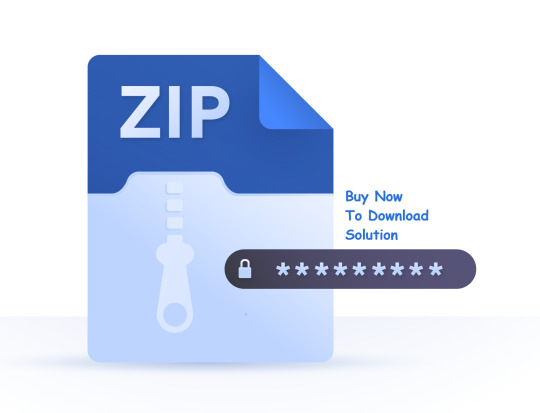
View On WordPress
0 notes
Text
ESOF 322: Software Engineering I Homework 2 solved
ESOF 322: Software Engineering I Homework 2 solved
Exercise Part A (15 pts) For each of the following (pseudo) code snippets provide the UML class diagram. 1. public class Student { (2pts) private Assignment assignment; } public class Assignment { private Student std; } 2. public class Disk { (3pts) private List< BackupAccess > entries; } public class BackupAccess { private DiskShare x; private List< Disk > disks; } public class DiskShare…
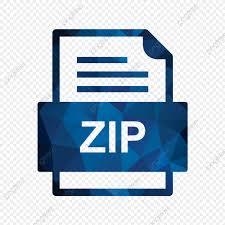
View On WordPress
0 notes
Text
UML Assignment Help
Need Help In Completing Your UML Assignment?
UML or Unified Modeling Language is a standardized modeling language in the area of software engineering. It is a general-purpose modeling language rich in diagrams and graphic notations used to create visual models of object-oriented software-intensive systems. It is thoroughly used in the entire software development lifecycle & across various implementation technologies. Every single UML diagram individually helps in designing a better software solution. Due to this significance of UML in software engineering, Universities all across the globe offer major courses in UML and students are given UML assignments. Students often find themselves in difficulty while making UML diagrams due to the plethora of concepts involved. It is also very time taking and as a result, most of the students start looking for online UML Assignment Help or UML diagram online help service to complete their UML homework due to fear of failing in their UML assignment.
A+ Quality Papers
How It Works
24x7 Assistance
Professional Writers
Professional Writers
Meet the highly qualified academic writers and receive quality papers for every project submission.
Plagiarism-free writing
Plagiarism-free writing
Only receive genuine and plagiarism-free writing to score excellent grades in assignments.
Correct Citations
Correct Citations
Your academic papers will be customized as per your project requirements with proper citations.
We curate our UML assignment homework with full dedication, diligence and always write our best in Unified Modelling Language assignment help which gets reflected through your marks.
The Unified modeling language is a subject in software engineering that is completely technology-based. It can be difficult for the students who are from a non-technical background and may face a lot of problems writing their UML assignments. Our Unified Modelling Language assignment help will clear your concepts and will make you understand the topic in a well-defined manner.
We make sure you get maximum benefit at affordable prices so that you choose us again and again and give our reference to other students as well. We keep every UML diagram online help unique in certain ways and always write in an etiquette manner so that it reaches the professional level.
#UML Assignment Help#UML Assignment Helpers#Online UML Assignment Help#Best UML Assignment Help#UML Homework Help#UML Assignment Solution#UML Project Help#Do My UML Assignment Help
1 note
·
View note
Photo










I am Spenser K. I am a UML Assignment Help Expert. I hold a Ph.D. in Programming, from RMIT University, Australia. I have been helping students with their homework for the past 11 years. I solve assignments related to UML. Visit eduassignmenthelp.com or email [email protected]. You can also call on +1 678 648 4277 for any assistance with UML Assignments.
#Edu Assignment Help#Edu Homework Help#assignment help#Homework Help#UML Assignment Help#UML Homework Help#Education
1 note
·
View note
Photo

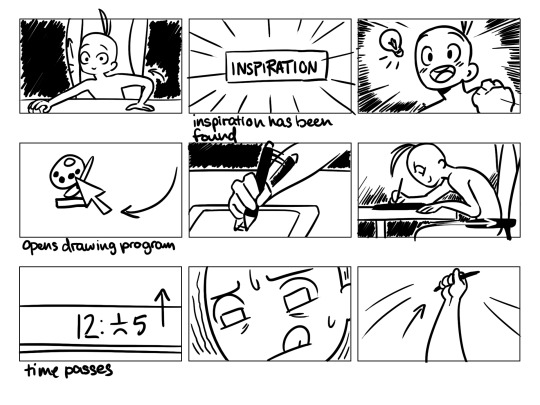
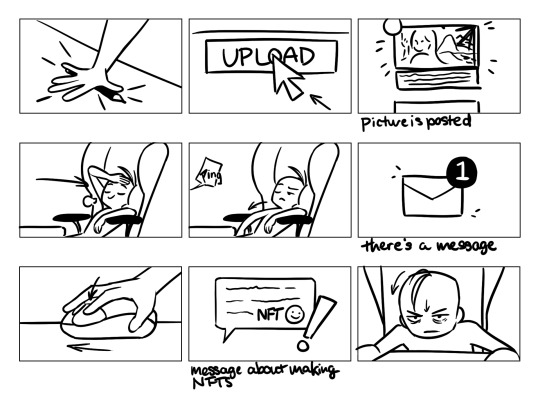

Homework for the first Storyboarding and Comics UML Spring 2022 assignment.
A day in the life of an online artist.
1 note
·
View note
Text
Self-Directed Professional Development Post #2
The article I’ve decided to read for this blog entry is titled, “Getting Started - An overview of Markdown, how it works, and what you can do with it.” The reason I picked this article is because it is connected to our first homework assignment. Our first homework assignment has us working with UML class diagrams and when I clicked on the web IDE on GitLab, I was brought to a file that was written in Markdown language where I would have to add my Java code and create PlantUML class diagrams. I’m not too familiar with Markdown language and since I would be interacting with it for my first homework assignment, I figured I’d do some research to learn more about it.
The article I read starts out by defining Markdown language, “Markdown is a lightweight markup language that you can use to add formatting elements to plaintext text documents.” The article then goes into explaining why people use Markdown. I’ve learned that Markdown can be used for essentially anything: from websites, documents, notes, books, presentations, email messages, to technical documentation. I also learned that Markdown is platform independent and that the content that is created on it doesn’t get locked into a proprietary file format like Microsoft Word.
Next, the article discusses how Markdown works. This process can be generalized into four steps:
Create a Markdown file.
Open the file in an Markdown application.
Use the Markdown application to convert the file to an HTML document.
Render the HTML document to a web browser (or another document).
During this part of the article, we also learn more about Dillinger, a Markdown editor that combines these steps. It was useful for me to learn the name of this editor because if I were to ever use Markdown for myself, I now know a common and popular editor to do so.
Lastly, the article’s main ending point is that there are many different “flavors of Markdown” and that using Markdown with one editor may provide a very different experience than using Markdown with a different editor. Many of the basic syntax may be the same but there are extended syntax elements that likely differ.
One of the biggest takeaways for me is that after I finished reading this article, I looked into other kinds of markup languages and learned how they are different from programming languages and scripting languages. Unlike programming and scripting languages, markup languages are presentation languages that do not do logical operations. It’s safe to say that, now that I’ve learned about Markdown, I feel more confident moving forward with my homework assignment (even if what I learned was going to be only a minor piece of my overall assignment).
Article: https://www.markdownguide.org/getting-started/
0 notes